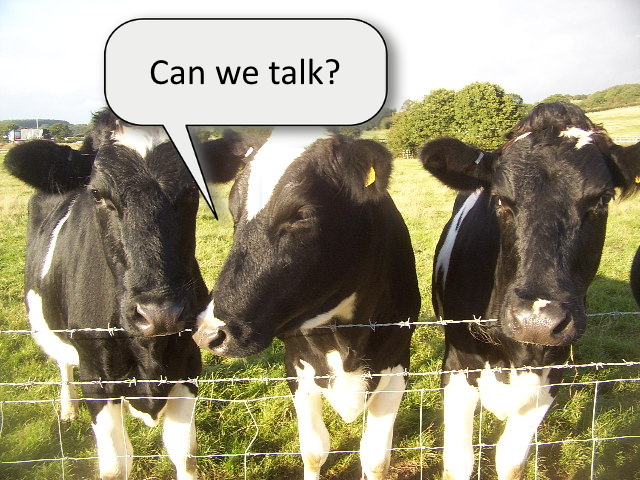The Problem: You don’t know how to write a proposal paper.
The Solution: Find someone who does know how to write a proposal paper (that would be me) and read her advice (that would be this article).
Problem solved.
Phew! That was easy, right?
So let’s get to work solving your problem. Follow me, and I’ll show you how to write a proposal paper with a purpose.

What the Heck Is a Proposal Paper?
A proposal paper is pretty much like it sounds. It proposes an idea (often a solution to a problem) and presents evidence to illustrate why and how the idea should be implemented.
Check out these example essays for an even better understanding of how to write a proposal paper:
- A Proposal on How to Save Wetlands
- A Proposal for an Alternative Punishment Method to Capital Punishment
- A Project Proposal for a for-Profit Transportation Service for Kent State University
Before you begin writing your proposal paper, you need to remember two important points.
Point #1: Know your audience
If you’re writing a proposal for business purposes, your proposal might be written for a client or for your employer. If you’re writing a proposal paper for a class, you need to check your assignment guidelines to see if your professor has already given you an audience.
If you don’t have an assigned audience, think about who would need to read your proposal in order to make it happen.
For instance, if you want to propose that your college expand parking facilities, writing your proposal to the financial aid office isn’t going to get any results.
This leads me to the second point you need to remember.
Point #2: Do your research
If you’re not sure who the audience is for your proposal, find out. Make some calls, send some emails, or do some research online.
You’ll also need to research the evidence to support your proposal.
If you’re proposing a new parking structure on campus, how much will it cost? Does the college have space for the structure? Will tuition increase if the college needs to spend money on additional parking?
Knowing your stuff means that people are more likely to believe you and will be more likely to implement your proposal. Fancy wording isn’t going to cut it. You need solid evidence to support your claims and to convince your audience.
Still with me? Great!
Now, let’s mooooove on to our discussion of the five core elements of a proposal paper.

5 Core Elements of a How to Write a Proposal Paper
I’m going to discuss five core components of a proposal paper: the introduction, discussion of the problem, the proposed solution, how to implement the solution, and the conclusion.
Depending on your proposal (and, of course, your assignment guidelines), you may need to include any number of varying elements in a proposal paper.
Your paper might also need to include other elements, such as a discussion of solutions that have been tried but have failed or a list of resources that will be used to implement your proposal.
If you’re doing any outside research (and you probably should), you’ll also need to consult your professor to see how your resources should be cited. (Common citations styles include MLA and APA.)
REMEMBER: Check your assignment guidelines or ask your professor about the exact components you’ll need to include.
And while you’re at it, check to see if you need to include headings. (Most proposal papers will include headings, such as Introduction or Proposal.)
Okay, so let’s get to the five core components and get you up to speed on how to write a proposal paper.
Introduction
Like any essay introduction, the introduction to a proposal paper serves to introduce your topic and grab the reader’s attention.
The proposal paper introduction should also illustrate the importance of the problem, convince readers that they need to care about your proposed solution, and help them realize the feasibility of your solution.
Let’s say you want to write about pets in dorms, and your audience is college administrators.
You open your essay with a discussion of how much you love animals and how important pets are to people. Your introduction then moves on to your proposed problem—students are not allowed to keep pets in their dorms.
You wrap up your introduction with your proposal to let students keep any type of animal, even a pony or a koala bear, in their rooms. Wait … what? A pony? A koala bear? Why not a cow?
This is an example of a proposal introduction that starts strong but doesn’t offer a realistic or feasible solution.
Let’s try another topic.
This time, you begin your paper with statistics of poorly attended Friday classes. You explain that Friday classes are not liked by many students and that not holding classes on Friday would benefit both the students and the college. You propose to shift these courses to other times throughout the week or move the courses online.
This proposal is much more feasible, and administrators might actually want to hear your reasons for not offering classes on Friday.
And if your proposal is implemented, think of how great it would be knowing that you’d never have to take a Friday class again!
Discussion of the problem

When writing about the problem, your goal is to convince readers that a problem exists and that readers need to care about the problem.
In other words, readers need to see the problem as real and worthy of their attention.
If you hate the color brown and your dorm has brown carpeting, think of this as a pet peeve rather than a real problem. Proposing that the college change all dorm carpeting to blue isn’t going to gain much traction.
On the other hand, if you present statistics about how often students miss Friday classes and present a survey of students regarding their grades, attendance, and engagement, administrators might take a closer look at whether they should offer Friday classes.
As you’re discussing the problem, don’t forget the importance of audience.
I’ve already mentioned this several times, but it bears repeating—again. Keep your audience in mind.
In this case, you’re writing to college administrators. If you’re trying to convince the administration that it should eliminate Friday classes, don’t write about how you just want to go home Thursday night or that you’re too tired on Friday morning because you usually stay out all night on Thursday.
This won’t earn you any points, and your proposal won’t be taken seriously.
Proposed solution
This section will be the shortest section of your paper.
When you propose a solution, you do just that. Write a few sentences to explain your solution.
The goal of this section is not to explain in detail how or why you propose to solve the problem. The goal is to briefly identify the problem and your proposed solution.
If you’re writing about eliminating Friday classes, your solution might read something like this:
Friday classes at XYZ University are consistently poorly attended, and students report a lack of interest and engagement in these classes due to the day the courses are offered. Thus, these courses should not be offered on Friday and should be offered Monday through Thursday or moved online.
How to implement the solution
Once you’ve proposed a solution, you need to actually have a plan to put it into place.
This section of your paper will provide the specific details of how you (or someone else) will implement the solution.
So what kinds of details should you include?
Details to convince your audience
Here, again, is your chance to convince your audience. This time, you’ll need to convince your audience that you have the qualifications to implement the solution. Or if your audience is the person or group that can implement the solution, convince them that they can, in fact, solve the problem.
Specifics of the proposal’s implementation
Explain exactly what needs to be done in order to put your proposed plan into place. Think about things like cost, time, and other resources needed.
Anticipate objections

Will anyone object to your proposal? It’s likely some people will. Therefore, in this section, anticipate their objections and let them know you’ve thought of such concerns and have already planned accordingly.
Let’s go back to the proposed plan of not offering classes on Friday.
Your proposal could encourage administrators to examine course schedules, speak with other administrators and the registrar, and highlight the fact that they are the best people to solve the problem.
Next, think about how to put the proposal in place. In this case, there would be no cost, and the administration could implement the new schedule within one or two semesters.
In the final part of this section, you might anticipate that administrators would want to keep Friday classes to best serve students. Of course, you’d argue that Friday classes are less than ideal for most college students.
We’re almost there. Stay with me. Don’t rest just yet. Our next, and final component on how to write a proposal paper is the conclusion.
Conclusion
The conclusion to a proposal essay is much like a conclusion to any essay. It should wrap up and restate your key points.
In the proposal paper, your conclusion should emphasize the importance and relevance of your proposal.
In a proposal paper about eliminating Friday course offerings, you might emphasize, again, poor attendance and lack of engagement and that students would learn better at other times during the weak.
The End?
Don’t forget that a first draft of any paper doesn’t mean the end of the writing process.
With all of the elements of your proposal paper in place, take a break and return to your paper in a few days to revise.
Not sure if your proposal paper really does offer a feasible proposal? Have a Kibin editor review your paper.
Happy writing!
